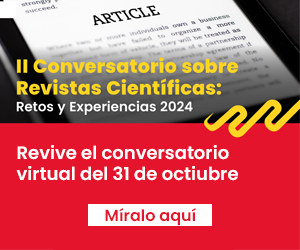Factores pronósticos asociados a la sobrevida de pacientes en hemodiálisis
DOI:
https://doi.org/10.20453/rmh.v35i4.6024Palavras-chave:
Diálisis, sobrevida, pronósticoResumo
Objetivos: Determinar la sobrevida general de la población en hemodiálisis y los factores pronósticos asociados. Material y métodos: Estudio de cohorte retrospectiva de pacientes que ingresaron al programa de hemodiálisis crónica del Centro Nacional de Salud Renal de EsSALUD entre 1994 y 2014. Se incluyeron 1 789 pacientes. Los datos fueron obtenidos del SIG versión 2.0 que almacena los datos de los pacientes desde su creación en 1994. Se estudió la sobrevida de toda la cohorte y los factores pronósticos asociados a ella. Resultados: Se evaluaron 1 789 pacientes, con una edad promedio de 49,7 ± 17,4 años, 779 (43,5%) pacientes fueron de sexo femenino; 393 (22%) de etiología diabética y 592 (33,2%) fueron hipertensos; 1 408 (83%) pacientes ingresaron con fístula Arteriovenosa. Ciento cuarenta y siete (8,16%) pacientes ingresaron con serología positiva para el virus de hepatitis C (VHC); 999 (55,84%) pacientes ingresaron en la década de 1994 al 2003 y 790 (44,16%) en la década del 2003 al 2014. La sobrevida de la cohorte estudiada no varió según el sexo, etiología hipertensiva, serología al ingreso al programa de hemodiálisis crónica para el VHC o década de ingreso. En el análisis multivariado los factores pronósticos que independientemente se relacionaron con menor sobrevida de los pacientes en hemodiálisis crónica fueron: el grupo etario mayor de 50 años [HR: 3,72 (IC95%: 3,07 – 4,50) p = 0,000] y el uso de catéteres al ingreso al programa de hemodiálisis crónica [HR: 1,37 (IC95%: 1,07 – 1,76): p = 0,010]. Conclusiones: La sobrevida no varió según la década de ingreso al programa de hemodiálisis crónica, mientras que la edad avanzada y el uso de catéteres se asociaron a menor sobrevida de la cohorte estudiada en un periodo de seguimiento de 20 años.
Downloads
Referências
Wankowicz Z. The role of technological progress vs. accidental discoveries and clinical experience in the evolution of dialysis. Med Sci Monit. 2013; 19: 984 – 992. Doi:
United States Renal Data System (USRDS). 2018 Annual Data Report Chronic Kidney Disease (CKD) in the United States. Disponible en https://www.niddk.nih.gov/about-niddk/strategic-plans-reports/usrds/prior-data-reports/2018
Kramer A, Pippias M, Noordzij M, et al. ERA EDTA Registry Annual Report 2016. Clin Kidney J. 2019; 12(5): 712 – 720.
Meneses V, León C, Huapaya J, Cieza J. Sobrevida en hemodiálisis según el período de ingreso de pacientes entre 1982 y 2007, en Lima Perú. Rev Med Hered. 2011; 22: 157 – 61.
Pinares F, Meneses V, Bonilla J, y col. Supervivencia a largo plazo en pacientes con Enfermedad Renal Crónica en estadio 5 tratada por hemodiálisis en Lima, Perú. Acta Med Perú 2018; 35(1): 20 – 7.
Cieza J, Bernuy J, Zegarra L, Ortíz V, León C. Supervivencia en las terapias de reemplazo renal dentro del concepto integral de oferta de servicios públicos. Período 2008 – 2012. Acta Med Per 2013; 30(4): 80 – 5.
Lameire N, Van Biesen W, Van Holder R et al. Did 20 years of technological innovations in hemodialysis contribute to better patient outcomes? Clin J Am Soc Nephrol. 2009; 4 Suppl 1: S30 – S40.
Rhee C, Unruh M, Chen J, et al. Infrequent dialysis: a new paradigm for dialysis initiation. Semin Dial. 2013; 26 (6): 720 – 7.
Laurent G. Calidad en diálisis: el tiempo, experiencia del centre del rein artificiel de Tassin (Francia). Nefrología 1999; S4: 42 – 46.
Flythe J, Curhan G, Brunelli S, et al. Shorter length dialysis sessions are associated with increased mortality, independent of body weight. Kidney Int. 2013; 83(1): 104 – 113.
Hwank H, Hong Y, Yoon H, et al. Comparison of clinical outcome between twice-weekly and thrice-weekly hemodialysis in patients with residual kidney function. Medicine. 2016; 95 (7): e2767
Gotch F, Sargent J. A mechanistic analysis of the national cooperative dialysis study (NCDS). Kidney Int. 1985; 28: 528 – 34.
Delmez J, Windus D. Hemodialysis prescription and delivery in a metropolitan community. St. Louis Nephrology Study Group. Kidney Int. 1992; 41: 1023 – 28.
Alvarez-Ude F. Hemodiálisis: evolución histórica y consideraciones generals. Nefrología. 1996; S4: 25 – 36.
Young E Goodkin D, Mapes D, et al. The Dialysis Outcomes and Practice Patterns Study (DOPPS): an international hemodialysis study. Kidney Int. 2000; 57 (S74): S74 – S81.
Goodkin D, Mapes D, Held R. The Dialysis Outcomes and Practice Patterns Study (DOPPS): how can we improve the care of hemodialysis patients? Semin Dial 2001; 14(3): 157 – 59.
Miller J, Kovesdy C, Nissenson A, et al. Association of hemodialysis treatment time and dose with mortality and the role of race and sex. Am J Kidney Dis. 2010; 55 (1): 100 – 12.
Stankuviene A, Ziginskiene E, Kuzmingkis V et al. Impact of hemodialysis dose and frequency on survival of patients on chronic hemodialysis in Lithuania during 1998 – 2005. Medicina (kaunas) 2010; 46 (8): 516 – 21.
Daugirdas J, Tattersal J. Automated monitoring of hemodialysis adequacy by dialysis machines: potential benefits to patients and cost savings. Kidney Int. 2010; 78: 833 – 5.
Saha M, Allon M. Diagnosis, treatment and prevention of hemodialysis emergencies. Clin J Am Soc Nephrol. 2017; 12: 357 – 69.
Mehrotra A, Wai-Ying L, Joson T. Nutrition vitamin D supplementation and health related outcomes in hemodialysis patients. Syst Rev 2021; 4: 13.
Messa P, Cozzolino M, Broncaccio D, et al. Effect on VDRA on survival in incident hemodialysis patients: results of the FARO – 2 observational study. BMC Nephrol. 2015; 16: 11.
Wolf M, Betancourt J, Chang Y, et al. Impact of activated vitamin D and race on survival among hemodialysis patients. J Am Soc Nephrol. 2008; 19: 1379 – 88.
Miskulin D, Bragg – Gresham J, Gillespie B, et al. Key comorbid conditions that are predictive of survival among hemodialysis patients. Clin J Am Soc Nephrol. 2009; 4: 1818 – 26. Doi:
Lin Y-T, Wu P-H, Kuo M-C, Lin M-Y, Lee T-C, et al. High Cost and Low Survival Rate in High Comorbidity Incident Elderly Hemodialysis Patients. PLoS ONE. 2013; 8(9): e75318. doi:10.1371/journal.pone.0075318.
Hecking M, Bieber BA, Ethier J, Kautzky-Willer A, Sunder-Plassmann G, et al. Sex-Specific Differences in Hemodialysis Prevalence and Practices and the Male-to-Female Mortality Rate: The Dialysis Outcomes and Practice Patterns Study (DOPPS). PLoS Med. 2014; 11(10): e1001750. doi:10.1371/journal.pmed.1001750.
Onofriescu M, Siriopol D, Voroneanu L, Hogas S, Nistor I, Apetrii M, et al. Overhydration, Cardiac Function and Survival in Hemodialysis Patients. PLoS ONE. 2015; 10(8): e0135691. doi:10.1371/journal.pone.0135691.
Lee M et al. Interdialitic weight gain and cardiovascular outcome in incident hemodialysis patients. Am J Nephrol 2014; 39: 427 – 35.
Amaral S. Serum albumin level and risk for mortality and hospitalization in adolescents on hemodialysis. Clin J Am Soc Nephrol. 2008; 3: 759 – 67.
Modesto G, Strogoff – de – Matos J, Ruzany F, et al. Early changes in serum albumin: impact on 2-year mortality in incident hemodialysis patients. J Bras Nephrol. 2015; 37 (2): 198 – 205.
Kwon E, Cho J-H, Jang HM, Kim YS, Kang S-W, Yang CW, et al. Differential Effect of Viral Hepatitis Infection on Mortality among Korean Maintenance Dialysis Patients: A Prospective Multicenter Cohort Study. PLoS One. 2015 Aug 11;10(8):e0135476. doi: 10.1371/journal.pone.0135476.
Leon C, Cieza J, Cieza R. Impact of hepatitis C on mortality in patients on hemodialysis. J Bras Nephrol. 2010; 32 (4): 335 – 39.
Osthus T, Von der Lippe N, Ribu L, et al. Health related quality of life and all – cause mortality in patients with diabetes on dialysis. BMC Nephrol. 2012; 13: 78 – 83.
Loza C, Ramos W. Análisis de la situación de la Enfermedad Renal Crónica en el Perú. Lima. Dirección General de Epidemiología. Ministerio de Salud. 2016.
Sepúlveda R, Pavlovic A, Corsi O y col. Análisis de sobrevida en pacientes incidentes de hemodiálisis en Chile, 2013 – 2019. Rev Med Chile. 2020; 148: 1715 – 24.
Gubensk J, Ponikvar R, Ekart R, et al. Very old patients on hemodialysis: how they start and can we predict survival? Blood Purif 2014; 38: 74 – 9.
Hara M, Tanaka S, Taniguchi M, et al. The association between dialysis dose and risk of cancer death in patients undergoing hemodialysis: the Q – cohort study. Internal Medicine 2019; 59: 1141 – 1148.
House A, Wanner C, Sarnak M, et al. Heart failure in chronic kidney disease: conclusions from a kidney disease: improving global outcomes (KDIGO) conference. Kidney Int 2020; 95: 1304 – 1317.
Hecking M, Bieber B, Ethier J, et al. Specific differences in hemodialysis prevalence and practices and the male – to – female mortality rate: The Dialysis Outcomes and Practice Patterns Study (DOPPS). PLoS Med. 2014; 11(10): e1001750. doi10.1371/journalpmed.1001750.
Van Diepen M, Schroijen M, Dekkers O, et al. Predicting mortality in patients with diabetes starting dislysis. PLoS ONE. 2014; 9(3): e89744. doi 10.1371/journal.pone.0089744.
Mousavi S, Beladi S, Akbarpour S. Diabetes Mellitus and end stage renal disease. Saudi J Kidney Dis Traspl. 2018; 29(4): 1005 – 1006.
Beladi S, Hayati F, Alemzadeh M, et al. Survival at 1, 3 and 5 years in diabetic and nondiabetic patients on hemodialysis. Iran J Kidney Dis 2010; 4(1): 74 – 7.
Losito A, Del Vecchio, Lusenti T et al. Systolic blood pressure and mortality in chronic hemodialysis patients: results of a nationwide Italian Study. J Clin Hypertens (Greenwich). 2013; 15: 328 – 32.
Bose B, McDonald S, Hawley C, et al. Effect of dialysis modality on survival of hepatitis C – infected ESRF patients. Clin J Am Soc Nephrol. 2011; 6: 2657 – 61.
Li -Mei Y, Yueh C, Ping L, et al. The impact of vascular access types on hemodialysis patient long term survival. Sci Rep. 2019; 9: 1 – 8.
Downloads
Publicado
Como Citar
Edição
Seção
Licença
Copyright (c) 2024 CARLOS ENRIQUE TAPIA ZERPA, César Antonio Loza Munarriz

Este trabalho está licenciado sob uma licença Creative Commons Attribution 4.0 International License.
Os autores cedem os seus direitos à RMH para que estas possam divulgar o artigo através dos meios ao seu alcance. A revista fornecerá formulários de declaração de autoria e autorização para a publicação do artigo, que deverão ser entregues juntamente com o manuscrito. Os autores conservam o direito de partilhar, copiar, distribuir, executar e comunicar publicamente o seu artigo, ou parte dele, mencionando a publicação original na revista.



















